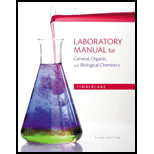
a.
To determine:
The concentration of the solution outside the cell as hypertonic or hypotonic if that solute is being transported across the cell membrane by passive diffusion.
Introduction:
Hypotonic solution: in this condition the concentration of solute is greater inside the cell than outside.
Hypertonic solution: in this condition the concentration of solutes is greater outside the cell than inside it.
Passive diffusion: diffusion moves solutes in a direction that attempts to equalize the concentration on either side of a membrane. This process does not require any additional energy, so this simple diffusion process is also called passive diffusion.
b.
To determine:
The concentration of the solution outside the cell as hypertonic or hypotonic if that solute is being transported across the cell membrane by facilitated transport.
Introduction:
Hypotonic solution: in this condition the concentration of solute is greater inside the cell than outside.
Hypertonic solution: in this condition the concentration of solutes is greater outside the cell than inside it.
Facilitated transport: small polar molecules diffuse very slowly across the nonpolar barrier found in the centre of the cell membrane. To enable small molecules and ions to pass through the cell membrane, some proteins found in the cell membrane have polar channels that open and close, allowing small polar molecules and ions to be transported across the cell membrane, to equalize the concentration gradient. These proteins are often integral membrane proteins. This type of transport is called facilitated transport and such transport does not require energy.
c.
To determine:
The concentration of the solution outside the cell as hypertonic or hypotonic if that solute is being transported across the cell membrane by active transport.
Introduction:
Hypotonic solution: in this condition the concentration of solute is greater inside the cell than outside.
Hypertonic solution: in this condition the concentration of solutes is greater outside the cell than inside it.
Active transport: some ions or small molecules must be transported across the cell membrane in the opposite direction of diffusion. Transporting ions or small polar molecules across the cell membrane in a direction opposite to equalizing concentration is possible and it also requires the assistance of a protein channel. This pumping in the opposite direction is called active transport, and it requires energy.
Want to see the full answer?
Check out a sample textbook solution
Chapter 8 Solutions
EBK LABORATORY MANUAL FOR GENERAL, ORGA
- Draw the major product of this reaction. Ignore inorganic byproducts. Assume that the water side product is continuously removed to drive the reaction toward products. O CH3CH2NH2, TSOH Select to Draw >arrow_forwardPredict the major organic product(s) for the following reaction.arrow_forwardPredict the major organic product(s) for the following reactions.arrow_forward
- Provide the complete mechanism for the reactions below. You must include appropriate arrows,intermediates, and formal charges.arrow_forwardIndicate the products obtained by reacting fluorobenzene with a sulfonitric mixture.arrow_forwardIf I have 1-bromopropene, to obtain compound A, I have to add NaOH and another compound. Indicate which compound that would be. C6H5 CH3arrow_forward
- If I have 1-bromopropene and I want to obtain (1,1-dipropoxyethyl)benzene, indicate the compound that I should add in addition to NaOH.arrow_forwardDraw the major product of this reaction. Ignore inorganic byproducts. Ο HSCH2CH2CH2SH, BF3 Select to Draw I Submitarrow_forwardFeedback (7/10) Draw the major product of this reaction. Ignore inorganic byproducts. Assume that the water side product is continuously removed to drive the reaction toward products. Incorrect, 3 attempts remaining Ο (CH3CH2)2NH, TSOH Select to Draw V N. 87% Retryarrow_forward
- If I want to obtain (1,1-dipropoxyethyl)benzene from 1-bromopropene, indicate the product that I have to add in addition to NaOH.arrow_forwardIndicate the products obtained when fluorobenzene reacts with a sulfonitric acid mixture (HNO3 + H2SO4). Indicate the majority if necessary.arrow_forwardIndicate the products obtained when chlorobenzene acid reacts with a sulfonitric acid mixture (HNO3 + H2SO4). Indicate the majority if necessary.arrow_forward
 Chemistry for Today: General, Organic, and Bioche...ChemistryISBN:9781305960060Author:Spencer L. Seager, Michael R. Slabaugh, Maren S. HansenPublisher:Cengage LearningChemistry: Matter and ChangeChemistryISBN:9780078746376Author:Dinah Zike, Laurel Dingrando, Nicholas Hainen, Cheryl WistromPublisher:Glencoe/McGraw-Hill School Pub Co
Chemistry for Today: General, Organic, and Bioche...ChemistryISBN:9781305960060Author:Spencer L. Seager, Michael R. Slabaugh, Maren S. HansenPublisher:Cengage LearningChemistry: Matter and ChangeChemistryISBN:9780078746376Author:Dinah Zike, Laurel Dingrando, Nicholas Hainen, Cheryl WistromPublisher:Glencoe/McGraw-Hill School Pub Co Chemistry: The Molecular ScienceChemistryISBN:9781285199047Author:John W. Moore, Conrad L. StanitskiPublisher:Cengage Learning
Chemistry: The Molecular ScienceChemistryISBN:9781285199047Author:John W. Moore, Conrad L. StanitskiPublisher:Cengage Learning General, Organic, and Biological ChemistryChemistryISBN:9781285853918Author:H. Stephen StokerPublisher:Cengage Learning
General, Organic, and Biological ChemistryChemistryISBN:9781285853918Author:H. Stephen StokerPublisher:Cengage Learning Introductory Chemistry: An Active Learning Approa...ChemistryISBN:9781305079250Author:Mark S. Cracolice, Ed PetersPublisher:Cengage Learning
Introductory Chemistry: An Active Learning Approa...ChemistryISBN:9781305079250Author:Mark S. Cracolice, Ed PetersPublisher:Cengage Learning





